Ammonite Fossil Captures Brief Moment in Deep Time
Every once in a while, a fossil is found that provides a remarkable insight into life in the past. An example of this is an Ammonite fossil that dates from the Late Jurassic. The shell of the dead ammonite was rolled along the floor of a shallow lagoon, before it finally came to rest on the finely grained sediment. An event that lasted for perhaps just a few seconds has been preserved within the fossil record, it has persisted for over 150 million years.
An Artist’s Illustration of the Ammonite Shell Drag
Picture credit: Manchester University
The Solnhofen Plattenkalk (Solnhofen limestone)
Located in the southern German State of Bavaria, the world-famous limestone beds that form the Solnhofen Lagerstätte, preserve, in exquisite detail, a remarkable fossil record of animals and plants including soft-bodied creatures such as jelly fish and delicate insects such as dragonflies. Many vertebrate fossils have also been excavated, perhaps the most famous of which are the fossils of the theropod Archaeopteryx, referred to as “Urvogel”, German for “first bird”.
The international team of scientists, which includes palaeontologist Dean Lomax (Manchester University), have been studying the 8.5-metre-long trackway a fossil of an ammonite shell as it was rolled along the soft, carbonate mud by the lagoonal currents. At the end of the track, the cricket ball-sized ammonite (Subplanites rueppellianus) came to rest.
The Team of Scientists Mapped the Progress of the Ammonite Shell Across the Bed of the Lagoon
Picture credit: Manchester University
The picture above shows the track of the ammonite (left to right), with line drawings of each element of the highlighted “tool mark” fossil shown below. The ammonite itself can be found at the end of the track (extreme right). The ammonite, a specimen of S. rueppellianus was already dead when the track was made, although fossils such as this have been found before, it is an extremely rare find. Technically, although the shell left a drag mark in the sediment and the body fossil is preserved, the track itself can’t really be regarded as a trace fossil.
Studying Ammonite Trace Fossils
Trace fossils such as trails, footprints, burrows and borings preserve evidence of the activity of animals. As the ammonite was dead when the track was created, it should not really be referred to as a trace fossil. A more accurate term might be “tool mark” to describe the fossilised movement of the shell across the lagoon floor.
Dean, lead author of the scientific paper published in the on-line academic journal PLOS One, commented:
“With fossils, we usually find body fossils, such as bones, teeth or shells, or trace fossils, such as tracks and burrows. However, the drag mark has not been made by the ammonite in life and does not reflect behaviour. Instead, the drag mark was created by the lake’s current moving the ammonite shell. It is easy to understand why such fossils have been misinterpreted as the traces of living organisms.”
Visit the website of Dr Dean Lomax: British Palaeontologist Dr Dean Lomax.
A Spectacular Record of a Late Jurassic Ecosystem
During the Late Jurassic, much of western Europe was covered by a warm, tropical sea. There were islands and these were home to an array of dinosaurs and other exotic creatures. The landscape included stagnant lagoons that had limited access to the open sea. These shallow bodies of water were extremely saline and very few organisms could tolerate the harsh conditions.
As a result, if animal or plant remains were washed into the lagoon from the land, or if, in this case, an ammonite was washed into the lagoon from the sea, there were very few scavengers or micro-organisms around to ingest the organic material. The still waters, devoid of life, helped the preservation of these animal and plant remains. Slowly, they would have become buried in the soft, finely grained mud at the bottom of the lagoon, or in this case a rare current had disturbed the rotting ammonite and rolled the shell along the lagoonal floor, before the shell finally fell over and came to rest.
Subplanites rueppellianus Fossil Preserved at the End of the Trackway
Picture credit: Manchester University
Plotting the Movement of the Ammonite
How exactly did the fossil move after it had already died? Ammonites had gas chambers, which they used to control their buoyancy and movement, similar to a submarine. However, the shell of the ammonite was probably empty and the authors of the study speculate that some of the gas remained present in the shell. This meant the ammonite did not sink straight to the bottom and fall over. Instead, the S. rueppellianus shell was dragged along the bottom of the tropical lagoon by what must have been a calm and steady current.
Dean Lomax Provides a Scale for the 8.5-metre-long Fossil Drag Mark
Picture credit: Manchester University
The start of the drag mark is not preserved, so the shell may have been rolling for much longer. The mark was created by contact of the ammonite’s ribs (ridges on the shell), with the lagoon floor. The mark begins with just two lines, suggesting only two of the ammonite’s ribs were in contact with the bottom of the lagoon. The number of ribs increases along the drag marks length.
Dean Lomax added:
“Fossils such as this are super rare and provide a snapshot of an unusual moment in deep time.”
Revolutionising the Way Palaeontologists Can Showcase Fossil Material
Intricate digital photogrammetry and three-dimensional modelling was used by the research team to create a detailed video of the fossil, showing the progression of the ammonite until its final resting place.
Dean Lomax Carefully Maps the Final Movements of the Ammonite Shell
Picture credit: Manchester University
Palaeontologist Peter Falkingham, (Liverpool John Moores University) and one of the co-authors of the study explained:
“We created a virtual model of the fossil by compiling over 600 photographs of the specimen. We then created a video, which shows the drag mark and the preserved Ammonite. Such modern techniques, like the photogrammetry method we used, have really revolutionised the way palaeontologists can study fossils.”
Everything Dinosaur acknowledges the help of the University of Manchester Press Team for their help in the compilation of this article.
Visit the Everything Dinosaur website: The Everything Dinosaur Website.


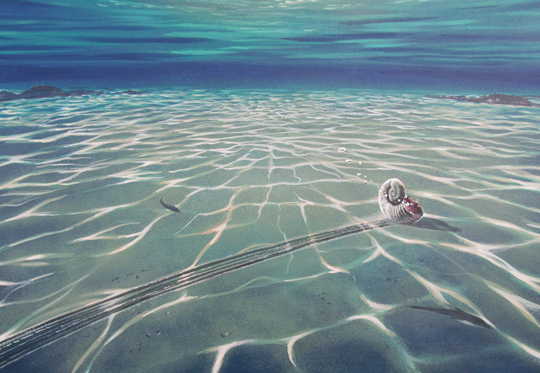
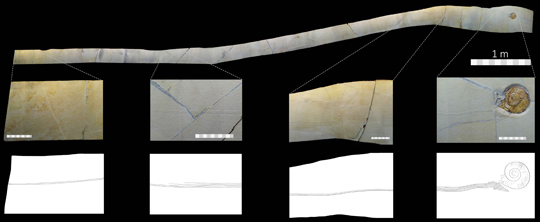
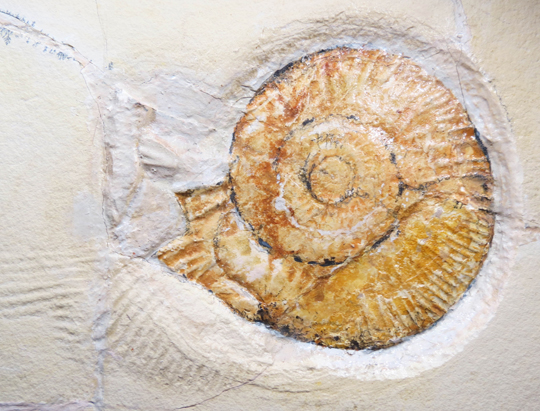
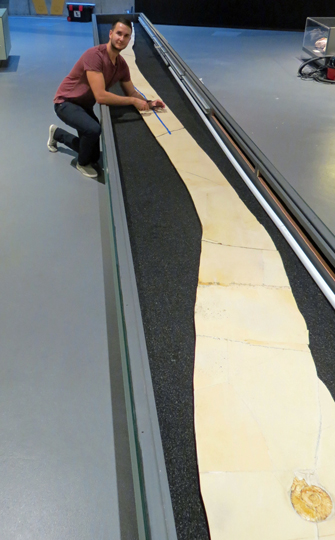
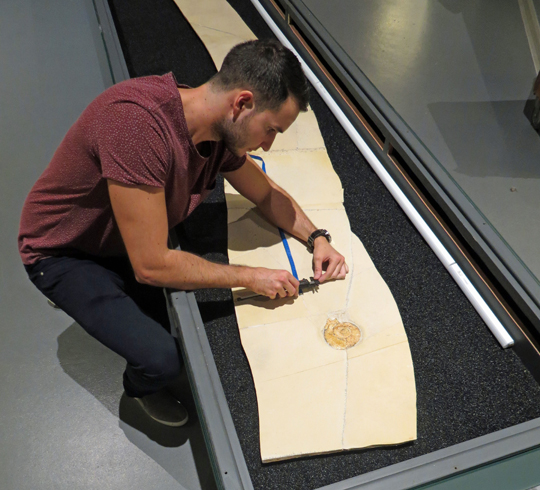




Leave A Comment